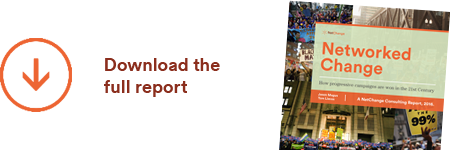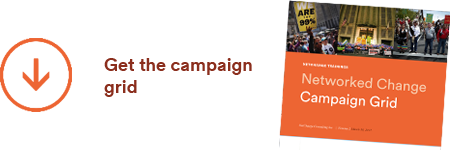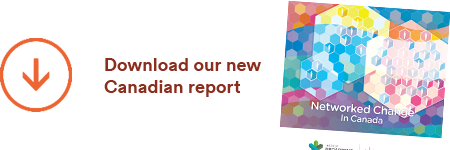On the weekend I got to attend the first ever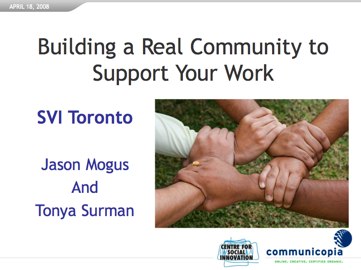 Social Venture Institute in Toronto, at the Kingbridge retreat centre just north of the city. It was a fabulous weekend – not just because of the 24 degree C in the sunshine but the amazing quality of the presenters, participants, and nascent community of socially engaged business people forming in Ontario.
Social Venture Institute in Toronto, at the Kingbridge retreat centre just north of the city. It was a fabulous weekend – not just because of the 24 degree C in the sunshine but the amazing quality of the presenters, participants, and nascent community of socially engaged business people forming in Ontario.
I was originally asked to present a workshop on the principles and practices of Web 2.0 for business leaders. A little later, event organizer extrodinairre Pam Chalout suggested I co-present with collaborator, client, and social innovation maven Tonya Surman. Besides being friends for almost a decade, Tonya is one of Canada’s most well known new social entrepreneurs, largely due to her work getting the environmental toxics agenda onto the national stage and for her founding of the incredible Centre for Social Innovation in downtown Toronto (we’ve had our remote office there since day 1).
Our team created Tonya’s CSI website late in 2007, after a fun yet challenging on-again-off-again online strategy process. We wanted our workshop to not only discuss the principles of Web 2.0 but explore a real life case study on how, when applied, they can create much goodness (plus why it’s sometimes hard to apply 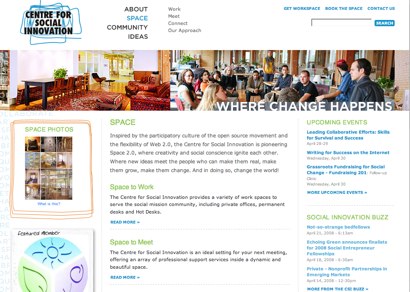 them!). Our basic premise was this: when an organization shares its story and opens up to the outside world – providing full transparency into its work and "giving away" its core assets – might this process unlock social capital, grow the organization’s community, and create a better world, faster, for everyone? That’s the theory we tested out.
them!). Our basic premise was this: when an organization shares its story and opens up to the outside world – providing full transparency into its work and "giving away" its core assets – might this process unlock social capital, grow the organization’s community, and create a better world, faster, for everyone? That’s the theory we tested out.
About 20 senior leaders in various social venture businesses and enterprising non-profits showed up, some of my favourite people anywhere including Tzeporah Berman, Mal Warwick, Bob Penner, Joel Solomon, Allyson Hewitt, and Jason Farris. To grab their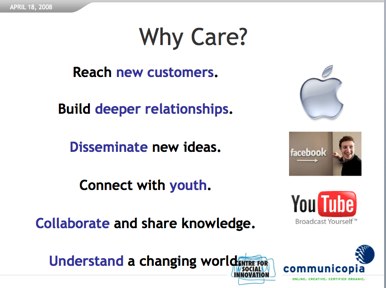 attention, and deal with any techhy nay-sayers in the room, I started with a "why pay attention to Web 2.0" slide, which makes the case for this work and why it’s important.
attention, and deal with any techhy nay-sayers in the room, I started with a "why pay attention to Web 2.0" slide, which makes the case for this work and why it’s important.
They were the perfect audience as I generally don’t get too techhy, but also in my experience executives are the people who actually have the most ability to make Web 2.0 succeed or fail. Because at the end of the day Web 2.0 success is not about tools at all: it’s about the culture of an organization, and whether they are ready to become more open with the world, more collaborative with their audiences, listen to what they have to offer, and create a real place for them to become involved in the real work of the organization.
Our "Principles of Web Thinking" is the heart of the presentation:
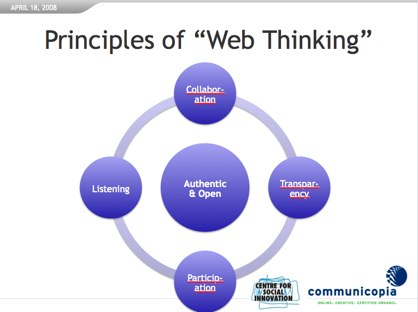
Back to the executive audience: as long as the people in power continue to operate in the comfortable ways that have made many of us successful in the past, their young tech / web team can launch all the blogs, wikis, and open systems they can get their hands on, but they won’t work and they won’t last. Until internal cultures, systems, and people can align themselves with open principles, the true potential of communities and networks won’t be reached.
From where I sit, Open is changing everything, and being open and authentic are the keys to unlocking the incredible power and magic of trust and support networks. You see, the people I work for have built incredible values-driven brands, and their constituents love them for it! Many of those same customers have meaningful things to give in return (beyond the standard "buy my product / donate $25 today). Some of them will turn into the most powerful marketing tool you can get: inspired, self-organized brand champions.
But most organizations today are not asking for the help they need, aren’t actively listening to their constituencies, aren’t geared up to respond to customer ideas, and aren’t supporting their customers to take their brand into their communities. Underneath this, I find, lies fear: of being able to tell real, sometimes vulnerable stories (not just the polished good ones), of "full control" over the brand, and of messy self-organization outside the control of the marketing/management team. A concern that, by empowering others to take your brand into the world, they won’t do it exactly as you might want it.
These are true issues and risks involved and I in no way wish to dismiss them. We had a great discussion amongst the participants on the merits and risks of being more open, and we all learned a lot. I think this is a fun thread that we’re uncovering across our work in lots of industries (for-profit, non-profit, government, foundations) and it will be fun to see where this takes the culture over the next few years.
The full slideshow is here:
As always, I’d love to hear any comments, disagreements, or ideas on the above!







